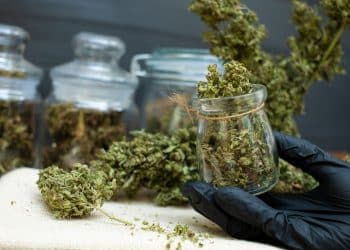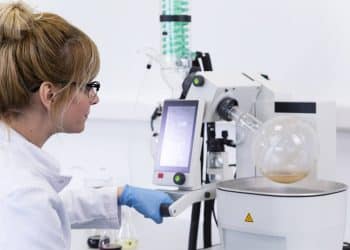Given the panoply of medicinal molecules within Cannabis sativa, there are many different avenues that one can take when generating or designing a product. These could include recreating the chemovar of a specific cultivar in an extract or concentrate form; creating a novel chemistry meant to impart a specific medicinal effect (i.e., anti-anxiety, analgesic); or using chemistry to transform delta-9-tetrahydrocannabinol (THC) to its delta-8 isomer, which is said to be less anxiogenic (anxiety-causing).
These options provide the canvas for a product formulator to spin their artistic creativity while simultaneously invoking science and medicine to help humankind holistically in a time of extreme need.
I recently spoke with Jeff Raber, Ph.D., chief executive officer and chief visionary officer at The Werc Shop, a prestigious cannabis product formulation laboratory whose reach spans across the United States, to learn more about how The Werc Shop approaches their formulations.
Jason S. Lupoi, Ph.D.: Across all the years you’ve been making cannabis-derived product formulations, what have been some common themes that you’ve seen, especially with regards to the ensemble effect?
Jeff Raber, Ph.D.: We continue to marvel at its complexity. A continuing theme across the board is the requirement for wide ranging precision. We can clearly see broader and more marked impacts using more than one cannabis component. The ensemble effect is at play, but what appears to be minor variations can sometimes cause major shifts in perceptions of those effects.
JSL: What’s the current status of the use of botanically derived terpenes in formulations, and how do you expect that to change in the near future?
JR: Botanically derived terpenes are readily allowed and permitted to be used in highly regulated and mature markets. Disclosure of ingredient lists are now being required and a thorough understanding of the regulatory aspects for each molecule used in these formulations is an absolute requirement for any supplier of these formulations. We expect more states and countries to increase their documentation requirements and level of scrutiny on each and every component used in these formulations, and we believe that’s a very good thing for the industry.
JSL: How do you see the conversations surrounding delta-8-THC playing out?
JR: On a state-by-state basis for the foreseeable future. Its physiological utility will demand it is always part of the conversation, so it isn’t a matter of banning it, but understanding how to best regulate and guide its supply chain.
JSL: Besides cannabidiol (CBD) and THC, what cannabinoid(s) or terpenes excite you from an organoleptic perspective, and a medicinal perspective?
JR: I’m a fan of both terpinolene and linalool. They both possess a wonderful and uniquely distinct smell as well as medicinal implications to their formulations.
JSL: As master formulators, what are some examples of ancillary equipment that you couldn’t live without in your lab?
JR: An accurate balance! While that may seem simple, you have to know exactly how much of everything you are using to really have confidence in knowing your formulation. Mixing and homogenization tools are also ones we couldn’t live without.
JSL: What do you hope to educate consumers on with the Cannaroma Kit?
(Note: The Cannaroma Kit includes information regarding how our olfactory sense works, details on the ensemble effect, 10 nose trainers, 9 terpenes, and a Jack Herer cultivar blend.)
JR: That terpenes are all around us and possess properties of interest for a whole myriad of reasons. Hopefully, there is an awakening that these molecules have been all around us all the time and knowing what else goes with them and in which relative amounts are critical to their broad applicability and utility. We should seek to harness these sustainable resources for all we can.
JSL: When creating a new product, do you tend to focus more on organoleptic properties, or the effects that the unique chemistry will offer?
JR: We are driven by effect first and organoleptic properties thereafter. As it’s possible, but surely not easy, to create formulas that taste great and also have desirable effects, why do anything else but that as consumers are demanding both in the same product currently. Cannabis is surely about more than just flavor.












